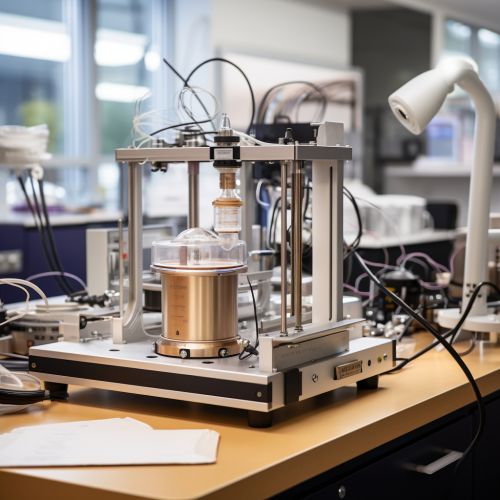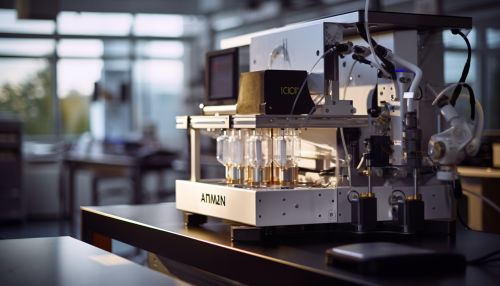Ion implantation
Introduction
Ion implantation is a materials engineering process by which ions of a material are accelerated in an electrical field and impacted into a solid. This process is used to change the physical, chemical, or electrical properties of the solid. Ion implantation is used in semiconductor device fabrication and in metal finishing, as well as various applications in materials science research. Read more about semiconductor device fabrication here.
Process
The process involves the ionization of an atomic species, acceleration of the ions to high energies, and then their subsequent impact into the target material. The ions can come from a variety of sources, and their energy can range from a few tens of electronvolts (eV) to several million electronvolts (MeV). The process is typically performed at room temperature, but it can also be done at elevated temperatures for certain applications. Learn more about ionization here.


Applications
Ion implantation is used in a wide variety of applications. In the semiconductor industry, it is used to dope silicon with a specific type of atom. The implanted atoms can change the behavior of the silicon, allowing it to conduct electricity in a controlled manner. This is a crucial step in the creation of transistors, which are the building blocks of all modern electronic devices.
In the field of materials science, ion implantation is used to improve the properties of metals and ceramics. For example, it can be used to increase the hardness of a metal, or to make a ceramic more resistant to heat. It can also be used to create thin films of material with unique properties.
Ion implantation is also used in the field of medical research. For example, it can be used to create radioactive isotopes for use in medical imaging. It can also be used to create materials with specific properties that can be used in the creation of medical devices.
Advantages and Disadvantages
Like any technology, ion implantation has its advantages and disadvantages. One of the main advantages is the level of control it offers. By adjusting the energy of the ions, it is possible to control the depth to which they penetrate the target material. This allows for a high degree of precision in the modification of materials.
However, ion implantation also has some disadvantages. One of the main disadvantages is the cost. The equipment required for ion implantation is expensive, and the process itself can be time-consuming. Additionally, the process can cause damage to the target material, which can limit its usefulness in certain applications.
Future Directions
Despite these challenges, the future of ion implantation looks promising. Advances in technology are making the process more efficient and less costly. Additionally, new applications for ion implantation are being discovered all the time. For example, researchers are exploring the use of ion implantation in the creation of quantum computers, which could revolutionize the field of computing.
